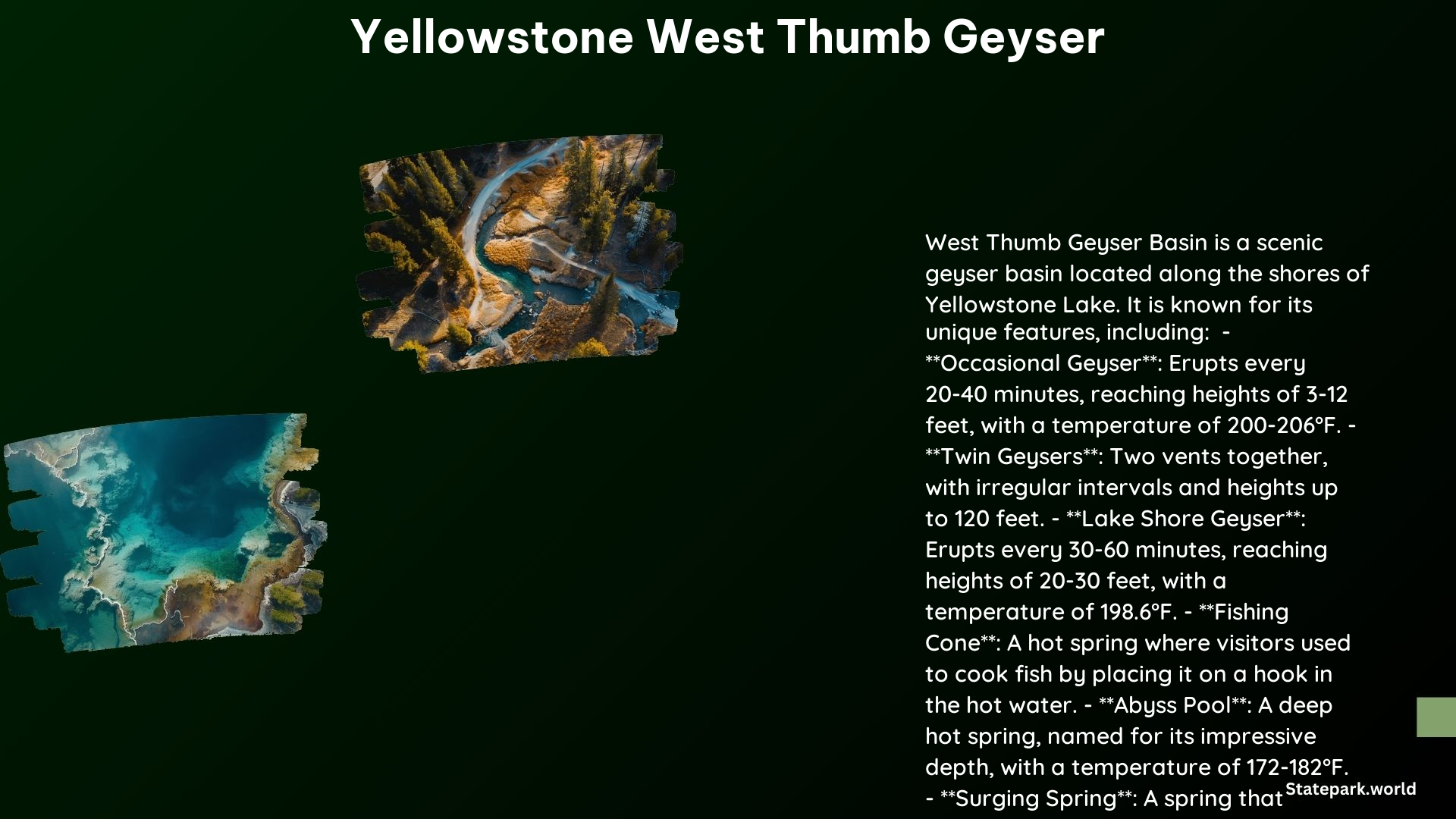The West Thumb Geyser Basin in Yellowstone National Park is a captivating destination that offers visitors a glimpse into the park’s remarkable geological history and diverse hydrothermal features. Located along the shores of the stunning Yellowstone Lake, this basin is a must-visit for any Yellowstone enthusiast.
History and Naming of the West Thumb Geyser Basin
The West Thumb Geyser Basin got its name from the thumb-like projection of Yellowstone Lake, which was first documented by the 1870 Washburn Expedition. However, the area’s history dates back much further, with early mentions in the writings of trapper Daniel T. Potts in the 1820s and the explorations of the Folsom-Cook-Peterson Expedition in 1869.
In the early days, the West Thumb was a popular lunch spot and stopping point for visitors traveling by stagecoach or steamer. As the park’s infrastructure developed, the basin became a hub for visitors arriving by car, allowing them to explore its unique features up close.
Geology and Hydrothermal Features of the West Thumb Geyser Basin

The West Thumb Geyser Basin is a remarkable geological feature, formed by a large volcanic explosion approximately 150,000 years ago. This event created a caldera within a caldera, with the heat source for the hydrothermal features located relatively close to the surface, about 10,000 feet down.
The basin is home to a diverse array of hydrothermal features, including hot springs, pools, mud pots, fumaroles, and lake shore geysers. Some of the most notable features include:
Abyss Pool
Named for its impressive depth of around 53 feet, Abyss Pool is known for its stunning ultramarine hue.
Black Pool
This pool was originally dark due to cool waters and bacterial growth, but it shifted to an intense blue color after a temperature change in 1991.
Fishing Cone
This hot spring was once famous for allowing visitors to catch fish from the lake and cook them on the hook. However, this practice is now prohibited due to health concerns and the risk of burns.
Underwater Geysers
In the 1990s, several underwater geysers were discovered in the basin, visible as slick spots or slight bulges in the summer and melt holes in the icy surface during winter.
Visitor Information and Accessibility
The West Thumb Geyser Basin is accessible via a boardwalk that weaves around the area, dividing it into two zones. The best approach is to take a right at the fork from the path connecting the basin and the parking lot.
The lake shore geysers, such as Occasional Geyser and Lake Shore Geyser, have varying durations and heights, ranging from 3-12 feet to 20-30 feet. Visitors can enjoy the tranquility of the basin and marvel at the diverse hydrothermal features that make this location so unique.
Practical Information
- Location: The West Thumb Geyser Basin is located along the shores of Yellowstone Lake, offering a scenic and peaceful setting for visitors.
- Duration and Height: The lake shore geysers in the basin have varying durations and heights, providing a dynamic and ever-changing display.
The West Thumb Geyser Basin is a true gem within Yellowstone National Park, offering visitors a chance to explore the park’s remarkable geology and hydrothermal features. Whether you’re a first-time visitor or a seasoned Yellowstone enthusiast, this basin is sure to leave a lasting impression.
References
- https://yellowstoneinsider.com/exploring-west-thumb-geyser-basin/
- https://www.nps.gov/yell/planyourvisit/westthumbgrantvillage.htm
- https://www.nps.gov/yell/learn/nature/west-thumb-geyser-basin.htm
- https://www.tripadvisor.com/Attraction_Review-g60999-d290467-Reviews-West_Thumb_Geyser_Basin-Yellowstone_National_Park_Wyoming.html
- https://www.yellowstonenationalpark.com/westthumb.htm
